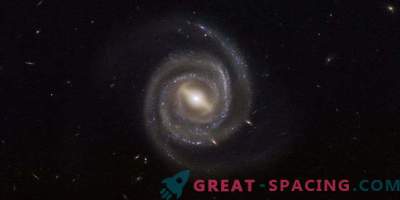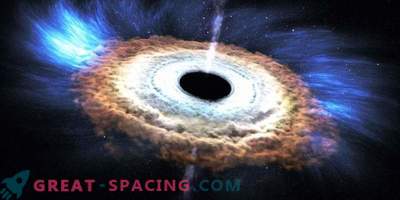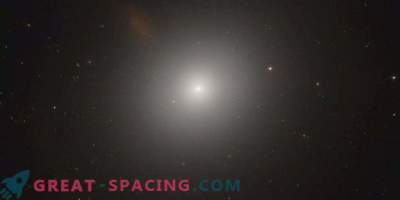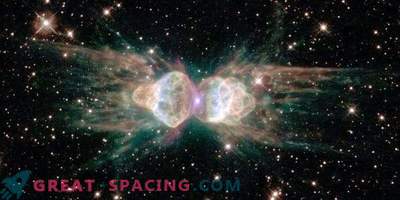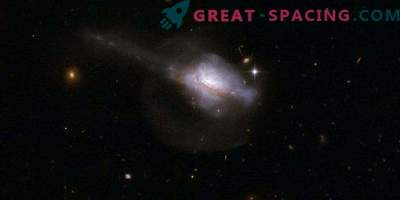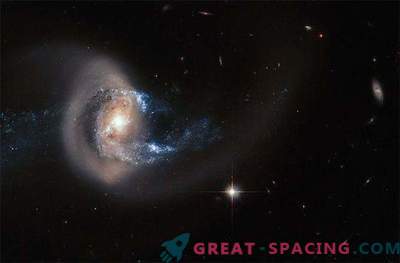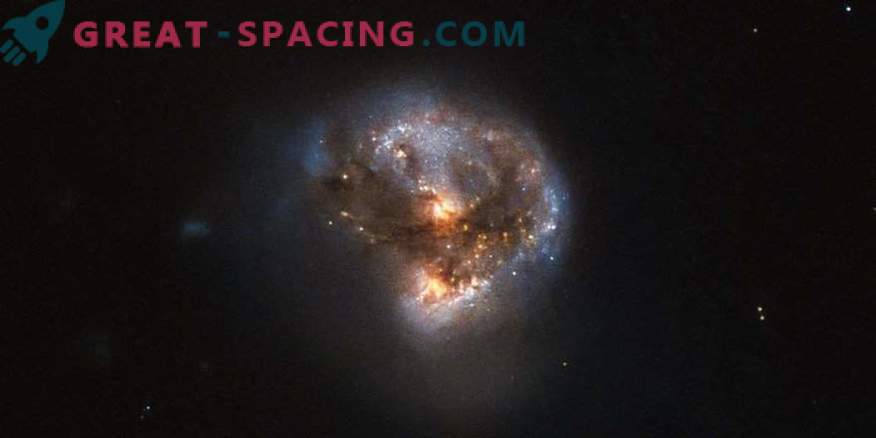
This galaxy has a powerful “megamaser,” sounding as if it was taken from the following Star Wars.
In the classic Star Wars: New Hope movie, Luke Skywalker, under the leadership of the rebel alliance, destroyed the Empire's terrible weapon - the Death Star. Underestimating the power of the Force, Darth Vader oversaw the construction of the second Death Star, which also ended its existence in Star Wars: The Return of the Jedi. 30 years later, in the part “The Force Awakens”, another masochist built an even bigger Death Star, capable of eating stars for breakfast, which also died at the hands of the rebels.
Therefore, if you follow the logic, will there be a super-weapon in the “Episode X” already the size of a galaxy, which could evaporate the neighboring galaxy with just one click?
It sounds fantastic even for the film, but Mother Nature turned out to be more far-sighted than Emperor Palpatine. The Hubble telescope noticed a fully functional megalaser the size of a galaxy.
The galaxy described here contains a “megamaser.” These are astronomical lasers that produce intense emissions of microwaves emanating from stimulated emission of microwaves from interstellar clouds located in the nuclei of galaxies. Their smaller cousins, stellar masers, can be found throughout our galaxy. Often they are produced in star-forming nebulae. For example, interstellar water molecules create certain frequencies that manifest themselves very vividly in the radio observation of space. Megamasers, however, generate 100 million times more energy than ordinary Milky Way masers.
The IRAS 16399-0937 galaxy, more than 370 million light-years distant from Earth, was observed by the Hubble extended observation camera, near infrared camera and multi-object spectrometer (NICMOS). Although it looks passive and calm, the generation of high-power microwave radiation makes it interesting for astronomy.
IRAS 16399-0937 contains two cores. This may indicate that initially there were two galaxies merged together. In the northern core there is a supermassive black hole 100 million times the solar mass. In addition, the southern core is an active, star-forming region. While the north is devoid of such processes. With the help of NICMOS Hubble, astronomers were able to understand that each nucleus is spiraling towards each other.
The industrial use of masers came even before we invented what we know as a laser (amplification of light by stimulated radiation). However, masers work at microwave wavelengths, while lasers operate at higher frequencies. In the laboratory, masers act through stimulated emission of microwaves, that is, they pass into the material, which, in turn, stimulates the emission of even more microwave photons. In astrophysical situations, microwaves pass into clouds of gas and molecules can be stimulated in them in order to pump out more microwaves than they get there. This generates a powerful output of coherent radiation at certain frequencies. But the use of the megamaser for the destruction of other celestial bodies remains in the field of science fiction. And IRAS 16399-0937 is unlikely to die at the hands of the rebels in the near future.
